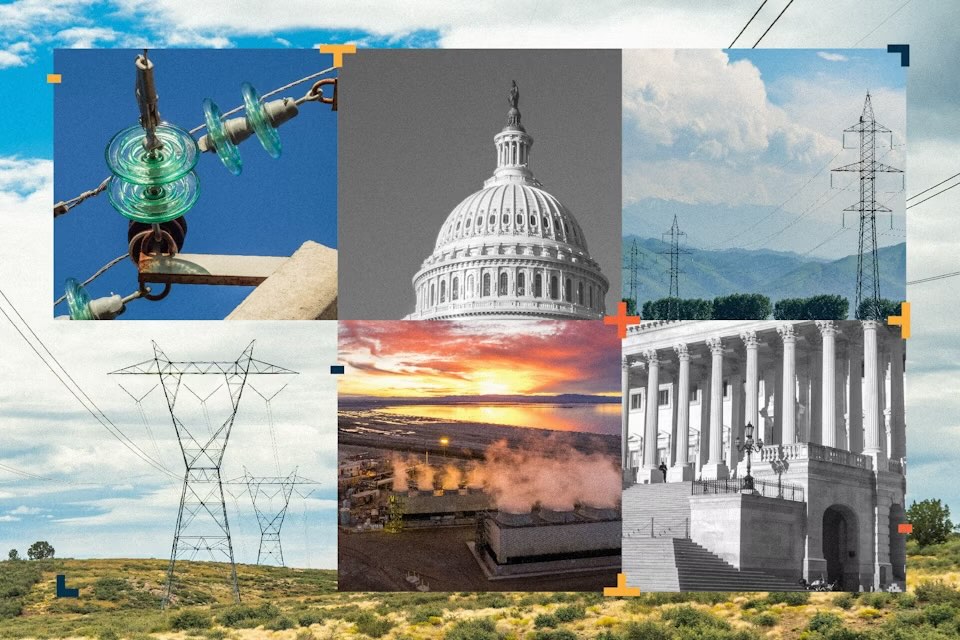What are the Emissions Impacts of The Energy Permitting Reform Act of 2024?
from Third Way
EcoTech Note: The most important federal lobbying opportunity is to press for passage of the Manchin-Barrasso bill — The Energy Permitting Reform Act of 2024 — in the lame duck session of this Congress.
Third Way has integrated the quantitative analyses of the NET effect on greenhouse gas emissions if the Act passes. The result? Estimates show that even in the worst case, the net impact will reduce greenhouse gas emissions by about 1% … with the best case scenario showing nearly a 17% reduction in GHG emissions.
By Shane Londagin, Senior Policy Advisor for Innovation
Takeaways
- The Energy Permitting Reform Act of 2024 (EPRA) pulls on multiple policy levers to streamline the permitting processes for a variety of energy projects.
- Assessing the emissions impacts of EPRA requires modeling these levers individually, each with a unique set of assumptions and inputs.
- An independent analysis of these modeling efforts suggests that, as a whole, the bill results in net emissions reductions.
Measuring the overall emissions impacts of EPRA requires assessing multiple provisions within the bill, including sections on onshore oil and gas leasing (§201 & §202), offshore oil and gas leasing (§301), liquefied natural gas exports (§601), and electric transmission (§402, §401, §209, §101). This analysis focuses on these sections specifically, but EPRA’s other provisions—such as those granting new categorical exclusions and reliability assessments—could also have upward or downward pressure on emissions. While modeling the prescriptive impacts of the bill is challenging, the direction and magnitude of impacts is clear. The chart below places these provisions in scene together, presenting the banded range in which potential emissions impacts could fall.
Taken as a whole, this analysis finds that EPRA results in significant net emissions reductions, in both low and high range scenarios. Even under a ‘worst-case’ emissions scenario, whereas the highest estimates for fossil fuel-related net emissions increases are juxtaposed with the lowest estimates for transmission deployment, the bill still results in net emissions reductions by 2050.

A series of assumptions were used to build this composite analysis and the ranges presented here should be understood in directional and magnitudinal terms.
- Onshore oil and gas modeling did not specifically model EPRA, but rather ‘sustained high levels of federal leasing.’ EPRA provisions are likely to have a more modest impact than the high leasing scenario presented here.
- LNG export modeling did not specifically model EPRA. The results reflect a range of potential emissions impacts if all proposed LNG export terminals currently awaiting export permit approval by the Department of Energy (totaling 12.8 billion cubic feet per day of nameplate capacity) are approved and all approved projects are ultimately built and are additional to US export capacity that would otherwise have been built. This is an extreme upper bound on the potential impact of the EPRA. The modeling estimates an annual value range for the 2035-2040 period. That estimate has been extrapolated to 2050 to compare cumulative emissions impacts of other provisions.
- Electric transmission modeling estimates a central scenario that reduces grid emissions by 6.5 Gt CO2e through 2050. To band this analysis, we use a ‘high attribution’ scenario from the study that places EPRA alongside other recent federal action on transmission expansion. In practice, multiple sensitivities and assumptions are at play, and emissions estimates could fall outside of the range displayed here.

Contributing Studies
This independent analysis pulls from new scholarship by leading energy system modelers at Resources for the Future (RFF), Rocky Mountain Institute (RMI), and Jesse Jenkins of Princeton University. Detailed methodologies can be found in the studies hyperlinked below.
Onshore Oil and Gas Leasing modeling by RFF can be found here.
Offshore Oil and Gas Leasing modeling can be found here.
LNG Export Terminal modeling by Jesse Jenkins can be found here.
Electric Transmission modeling by RMI can be found here.

